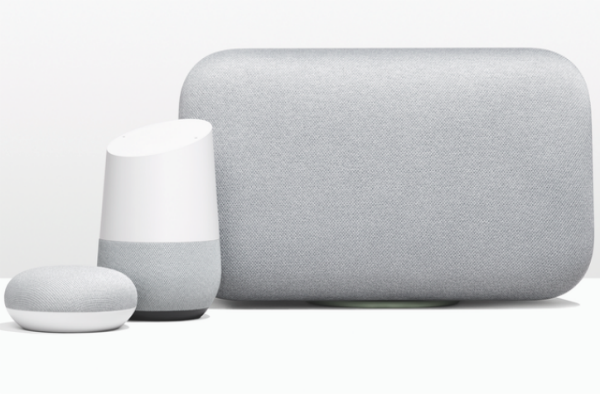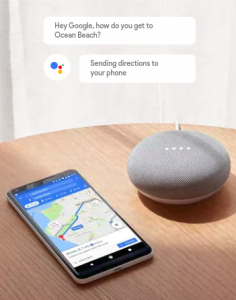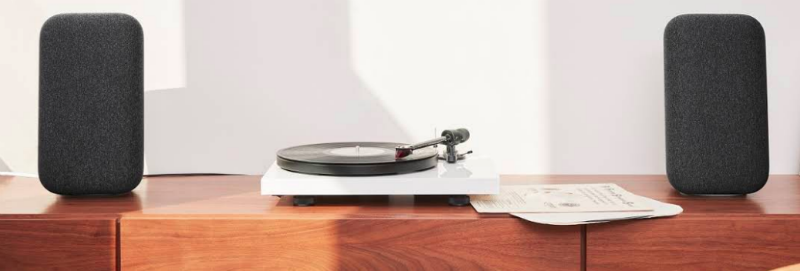 EMERGING TECH
EMERGING TECH
 EMERGING TECH
EMERGING TECH
 EMERGING TECH
EMERGING TECH
Google LLC has taken the fight to Amazon.com Inc., the established name in the smart home market, with the introduction Wednesday of two new smart home speakers.
The company’s Google Home lineup now includes the new Mini, a smaller, cheaper option and the Max, a high-end music speaker. Google’s smart home announcements come just two weeks after Amazon substantially increased its own lineup with five new Echo devices. And with Apple Inc.’s high-end HomePod due out in December, the competition is definitely heating up.
“I’m a big believer that for companies like Amazon, Google and Apple to win the battle for intelligence assistance, it starts in the home,” Michael Levine, vice president of marketing at Photon Infotech Ltd., told SiliconANGLE. “While Amazon spent the last few weeks expanding its reach with a variety of devices, announcing a smaller version of the Google Home is a logical next step. The time is now for Google its move toward upending Amazon’s dominance in the home voice assistant market.”
Here’s a look at the new Mini and Max, as well as the new Google Assistant features:

The Google Home Mini is a smaller, cheaper version of the original, with a price tag of $49 will compete directly with the Amazon Echo Dot.
The Google Home Mini, measuring four inches in diameter, is covered in “chalk,” “charcoal” or “coral” fabric. There are no visible buttons on the smart home device, but you can tap the top of the Mini to pause it, tap the left or right edges of the device to adjust the volume or mute it with the switch at the back.
Mostly, though, you will be talking to it. The four indicator lights on the top will only be visible under the fabric when they light up. The Mini is charged via a Micro USB.
Although you are unlikely to be listening to serious music on either the Mini or the Dot, they will work great for news updates or podcasts. Unlike the Mini, the Echo Dot does have the advantage of a 3.5-millimeter audio port, allowing you to connect a larger wired speaker. To do the same on the Mini, you would need a wireless speaker that supports Google Cast software.
The Google Home Mini is available for pre-order and ships Oct. 18.
The much larger and more expensive Google Home Max packs in a pair of woofers and is 20 times more powerful than the original. It also has a feature called Smart Sound, powered by artificial intelligence. Smart Sound will tune the speaker to provide the best sound depending on where it is placed in the room.
You will be able to use the Max to play music from YouTube Music, Google Play Music, Spotify and Pandora. It also has support for Bluetooth and Google Cast or you can connect your phone directly using the headphone jack. With its support for Chromecast, you can play video from YouTube or Netflix on any TV in your house. You can also control your other smart home appliances, like Google’s Nest lineup and Philips Hue smart lights, as well as other smart features like ordering pizza.

The Max will face strong competition from Apple’s HomePod, which is $50 cheaper and packs in seven tweeters to the Max’s two. The Max, however, does have the advantage of Google Assistant, which is smarter than Siri.
Another new smart home speaker from Sonos Inc. was also launched Wednesday. The Sonos One costs $199, but has a strong advantage over competitors in that it will work with both Amazon’s Alexa and Google Assistant. It’s not coming until 2018, however.
The Google Home Max will cost $399 and ships in December. You will also get a free 12-month subscription to ad-free YouTube Music.
A year after introducing Google Assistant, the company is rolling out new features for the digital assistant, which will be available over the next few months.
Starting with U.S. consumers, you can now choose between two Google Assistant voices. You will also be able to make additional purchases with Assistant, including support for 1-800-Flowers, Applebee’s, Panera and Ticketmaster.
Google will also bring Family Link, which the company rolled out to Android phones last week, to Home devices. Over the coming months, the company plans to roll-out more family-centric features, like the ability to play games or quizzes, as well as get Google Assistant to read a story to your children.
Google Assistant will also be able to support daily routines across devices, a feature very similar to Amazon’s multistep routines that it rolled out last month. Once set up, like Amazon’s, Google’s feature will allow you to control various tasks with one command. For example, when you arrive home, say “OK Google, I’m home,” and it will turn on the lights, adjust to your desired temperature and share your reminders.
The new broadcast feature will allow you to broadcast a message to all the Google Homes in the house to, for example, announce dinner is ready. You can also use Assistant on your phone to broadcast to your Google Home.
You can also control your Nest Camera, by instructing Assistant on Google Home to show you the entryway on your TV. Next year will bring Nest Hello’s Familiar Faces feature, which will broadcast to the Google Home devices in the house if Nest Hello recognizes the person at the door.
Support our mission to keep content open and free by engaging with theCUBE community. Join theCUBE’s Alumni Trust Network, where technology leaders connect, share intelligence and create opportunities.
Founded by tech visionaries John Furrier and Dave Vellante, SiliconANGLE Media has built a dynamic ecosystem of industry-leading digital media brands that reach 15+ million elite tech professionals. Our new proprietary theCUBE AI Video Cloud is breaking ground in audience interaction, leveraging theCUBEai.com neural network to help technology companies make data-driven decisions and stay at the forefront of industry conversations.